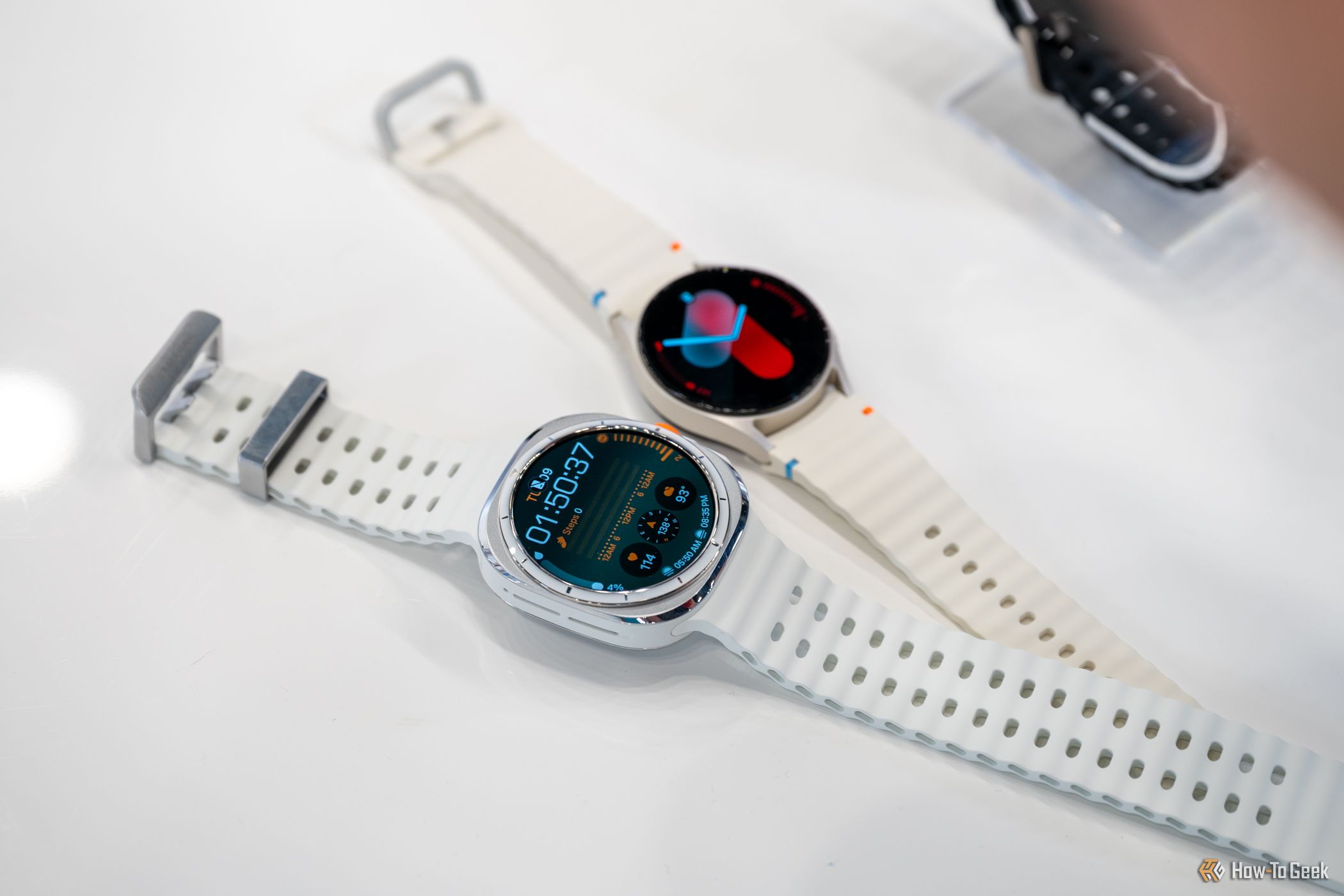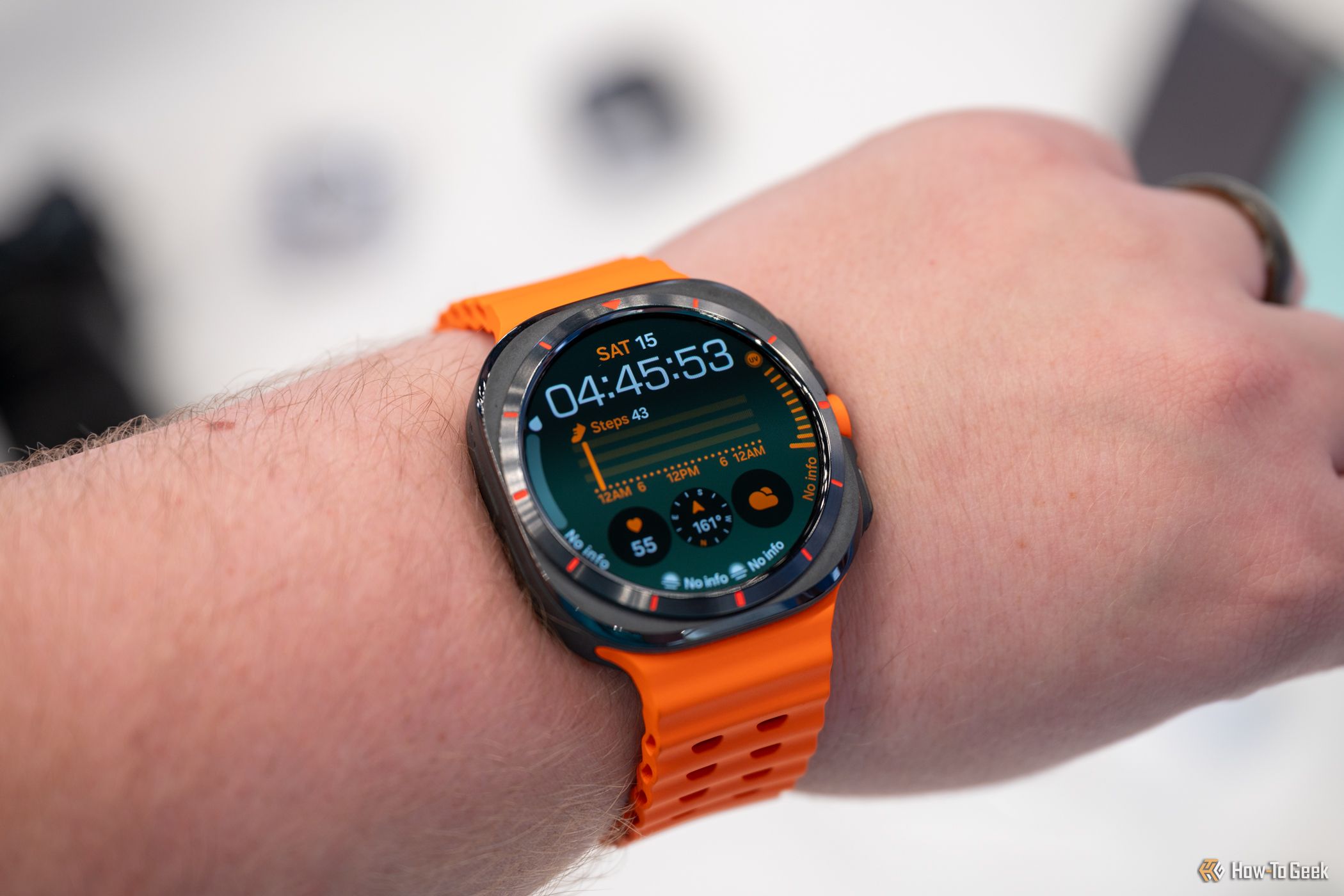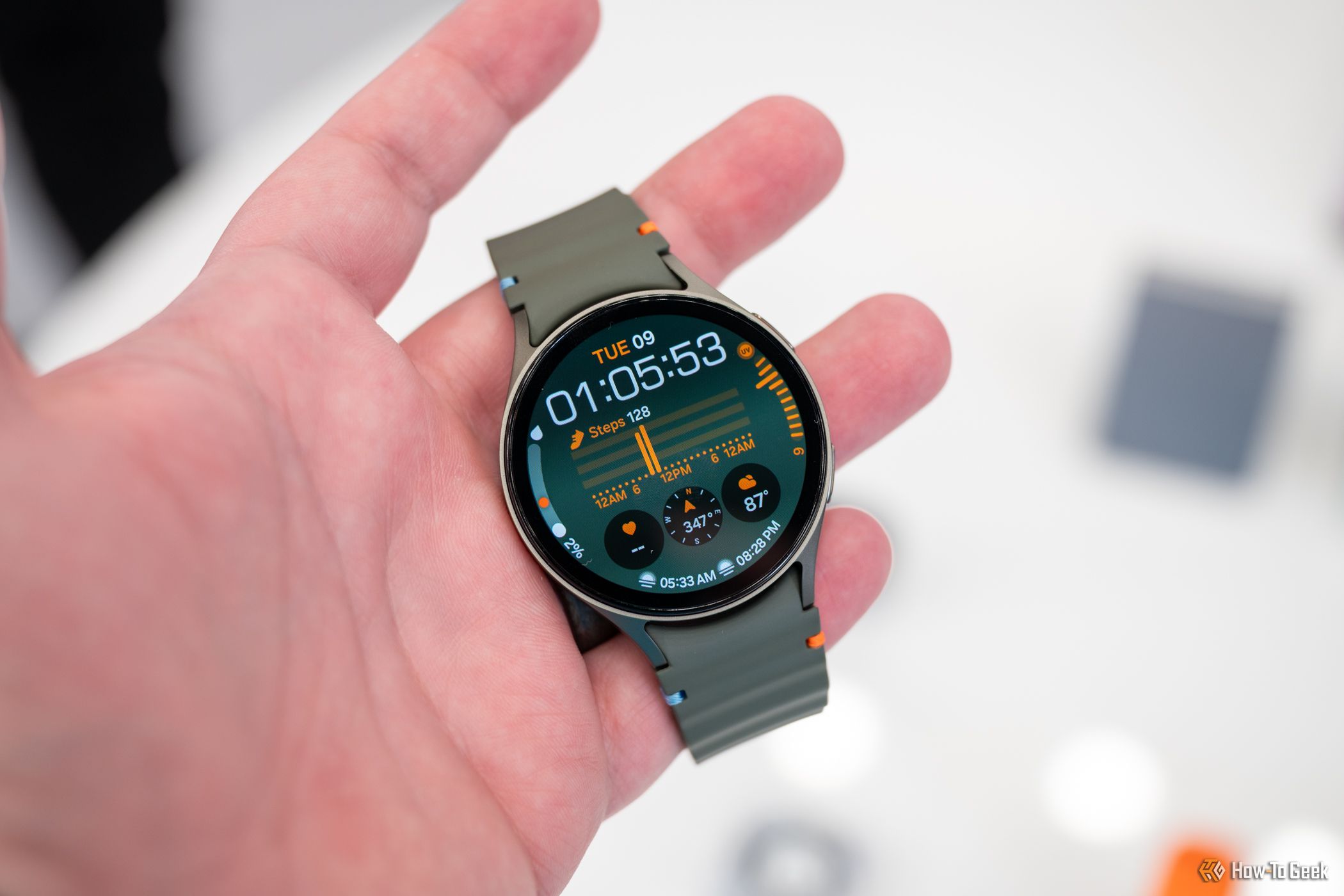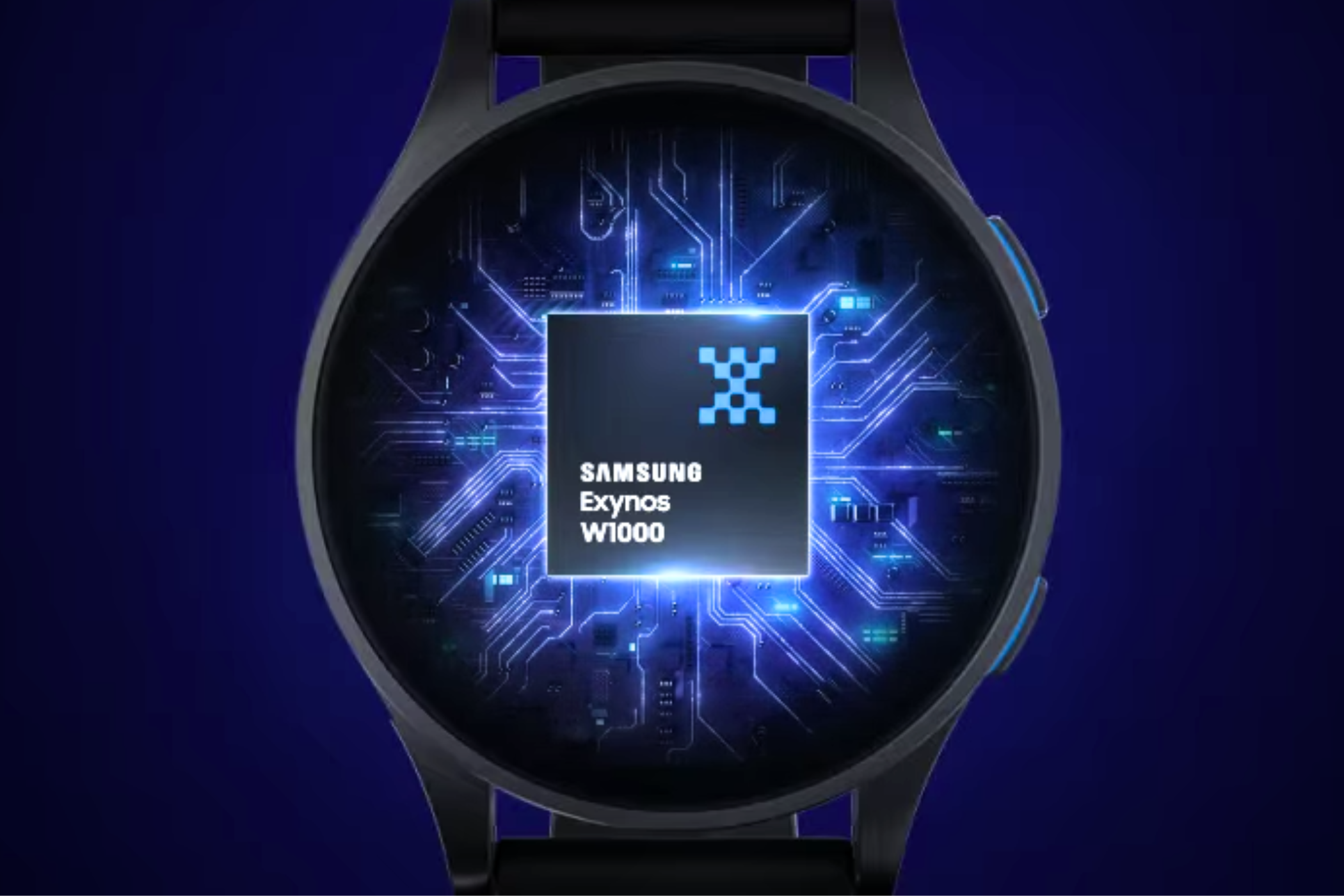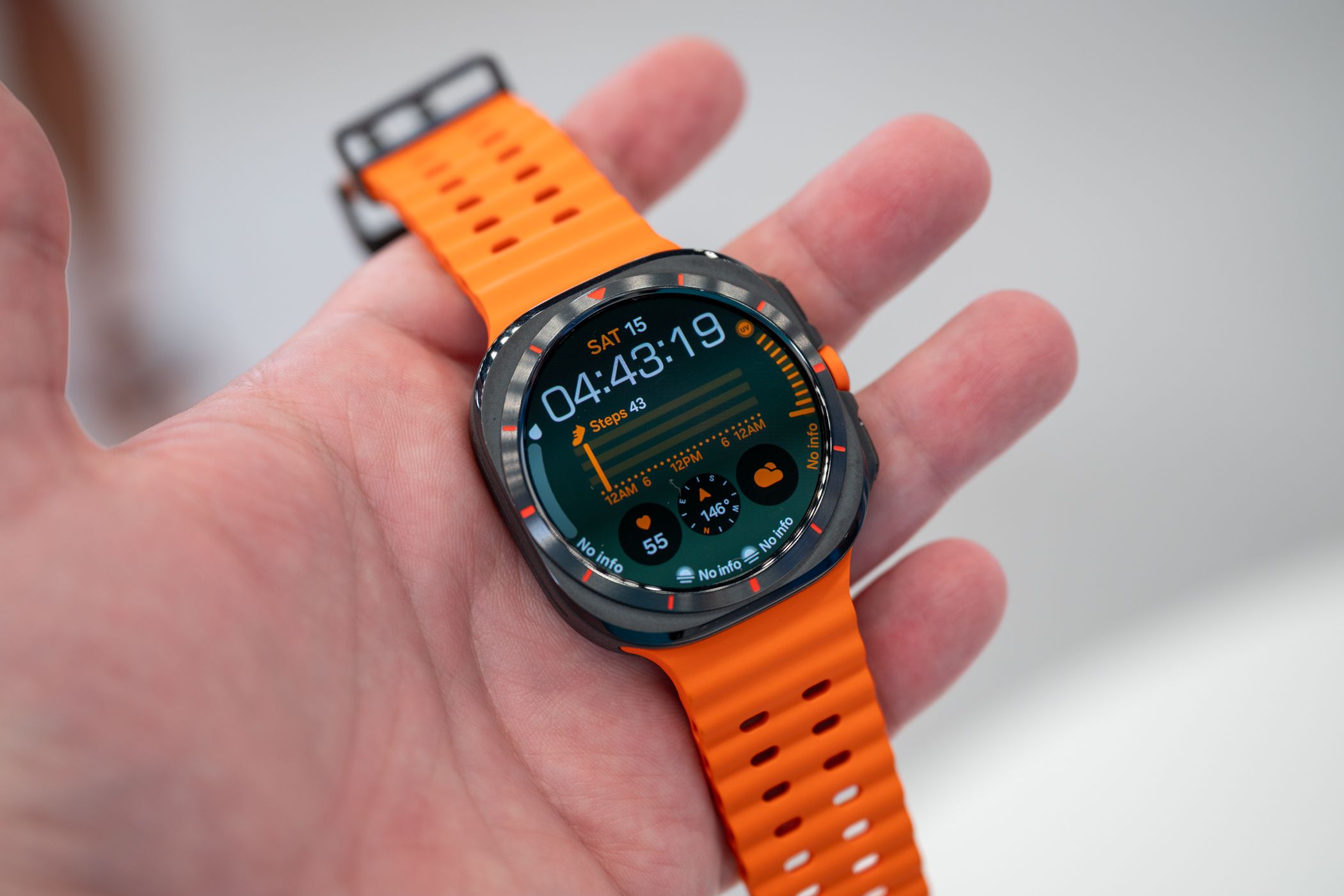Key Takeaways
- While the Galaxy Watch Ultra is pricier at $649.99, the Galaxy Watch 7 starts at $299.99 for the 40mm variant.
- When compared to the Watch 7, the Watch Ultra offers a rugged exterior and a better water resistance rating.
- The Galaxy Watch Ultra can last up to 100 hours in the power saving mode, which is over twice that of the Galaxy Watch 7.
Everyone mostly knew what to expect when Samsung revealed the Galaxy Watch 7, but the Galaxy Watch Ultra marked a new vertical for the company. Given a $350 difference in the products’ starting prices, there’s a lot to know about the differences. Here’s a detailed comparison to help you decide between the two.
Price & Availability
The Galaxy Watch Ultra (Bluetooth/Wi-Fi + 4G LTE) is Samsung’s most expensive smartwatch, priced at $649.99. The wearable is available in three colorways: Titanium Gray, Titanium White, and Titanium Silver. Buyers can also pair their favorite colorway with a suitable strap from Marine, Trail, and Peakform. Although it competes directly with the Apple Watch Ultra 2, the $150 price difference could turn things in its favor, especially for users who own both a Galaxy smartphone and an iPhone.
The Galaxy Watch 7 continues the legacy of Samsung’s regular smartwatches, wherein buyers can get the latest features for a more affordable price. Like every year, the Watch 7 comes in two sizes: 40mm and 44mm. While the Bluetooth-only variant of the smaller watch costs $299.99, the cellular variant costs $349.99. The Bluetooth and LTE variants of the larger version cost $329.99 and $379.99, respectively.
Both watches are up for pre-orders on Samsung’s official website and will be available at all leading retail outlets starting July 24. But why would you want to spend more on the Galaxy Watch Ultra if you’re already getting all the features in the Galaxy Watch 7 for half the price? The answer lies in a few key points.
Ruggedness Vs. Practicality
The Galaxy Watch Ultra is not only Samsung’s most expensive smartwatch but also its most rugged, water-resistant, and durable wearable. Its square-ish titanium chassis weighs 60.5 grams and measures 47.4 x 47.4 x 12.1mm. And while it does look like the watch has a boxy screen, the Watch Ultra really features a circular screen; this could be an intentional choice to increase the resemblance with the Apple Watch Ultra 2. The watch also features a programmable Quick Button to perform various tasks, such as starting workouts.
For enhanced durability, the Galaxy Watch Ultra ships with a 10ATM water resistance (for up to 10 minutes) and IP68 dust resistance rating. But for some odd reason, the watch isn’t suitable for diving or water sports. The watch also complies with the MIL-STD-810H standard, which tests a device’s usability in harsh weather conditions. In this case, the wearable can withstand temperatures up to 55°C and operate in the broader altitude range of 500 to 9,000 meters. Protecting the screen is a sapphire crystal display with higher scratch resistance.
The Galaxy Watch 7, in contrast, has a sleeker form factor. Depending on the size users get, the smartwatch weighs either 28.9 grams or 33.8 grams, which is almost half the weight of the Galaxy Watch Ultra. Even though the screen size of the 44mm Watch 7 is similar to that of the Watch Ultra, it doesn’t feel all that big. And for those wondering, the 44mm Watch 7 measures 44.4 x 44.4 x 9.1mm, while the 40mm variant is even smaller at 40.4 x 40.4 x 9.7mm.
Unlike the Watch Ultra, the Watch 7 doesn’t feature a Quick Button on the side or a 10ATM water resistance rating. Even though it has a 5ATM rating, it does retain the IP68 and MIL-STD-810H certifications from its more expensive counterpart. Hence, if you’re looking for a slimmer and lighter smartwatch, the Galaxy Watch 7 is the way to go. However, if you like bulky watches with thick frames and fancy straps, the Galaxy Watch Ultra is a no-brainer.
Watch Ultra Doesn’t Have a Bigger Screen After All
Since Apple’s Watch Ultra has the biggest screen in the lineup, you’d expect the Galaxy Watch Ultra to follow suit. However, that is not the case. The Watch Ultra shares its 1.47-inch Super AMOLED screen (327 ppi) with the Watch 7’s 44m variant. Those who want a smaller screen can opt for the 40mm Galaxy Watch 7, which ships with a 1.31-inch Super AMOLED screen.
Unfortunately, none of the watches feature the iconic physical rotating bezel that Samsung provided with the older models, like the Watch 6 Classic. You get a digital bezel, but it isn’t as satisfying as the old mechanical bezel. Regarding peak brightness, the Galaxy Watch Ultra’s screen can achieve 3,000 nits.
Both Smartwatches Feature The Exynos W1000 Chip
Shortly before the July Galaxy Unpacked event, Samsung’s Electronics division released the Exynos W1000 (3nm) chipset with improved processing power and efficiency. Naturally, both the Watch Ultra and Watch 7 models feature the chipset, which has 2GB of RAM and 32GB of storage. When it comes to health tracking features, both watches provide heart rate monitoring, blood oxygen monitoring, Sleep Apnea detection (FDA-approved), and automatic workout detection. Both watches get Samsung’s revolutionary BioActive Sensor for estimating the body composition and advanced glycation end products (AGEs) index.
This year, Samsung has integrated two AI-based features into its smartwatches, including Energy Score and Wellness Tips. Hence, a vast majority of features are common between the two models. However, the Galaxy Watch Ultra lives up to its moniker by featuring a couple of additional features, including a multi-sports mode and the ability to measure Functional Threshold Power (FTP), which is helpful for cyclists. Further, the watch also features an 85dB emergency siren.
Galaxy Watch Ultra Offers Better Battery Life
The Galaxy Watch Ultra offers the longest battery life of all. With the 590 mAh cell, the watch can last up to 60 hours in normal mode with an always-on display. If you wish to extend the battery life, you can disable the always-on display and get up to 80 hours of battery life. However, the watch can last up to 100 hours in the power-saving mode.
In comparison, the 40mm Watch 7 features a 300 mAh cell, whereas the 44mm Watch 7 features a 425 mAh cell. With smaller batteries, the Watch 7 variants are rated to last up to 30 hours with always-on display enabled and up to 40 hours with the setting disabled.
Which Is Right for You?
Well, it depends on what type of user you are. If you regularly perform hardcore physical activities like rock climbing, trekking, or swimming, I recommend you go with the Galaxy Watch Ultra. Even though Samsung doesn’t recommend using the watch for diving or water sports, the higher water resistance rating should provide some additional durability.
However, if you don’t like the bulky look and want a more subtle watch, you can go with the Galaxy Watch 7. It offers nearly all the features of the Galaxy Watch Ultra, minus the excellent battery life and titanium casing. The Watch 7 isn’t just lighter on your wrist, but it’s lighter on your pocket as well. Remember, the Galaxy watches function best with Samsung Galaxy phones, so you might not want to get them with an iPhone.
-
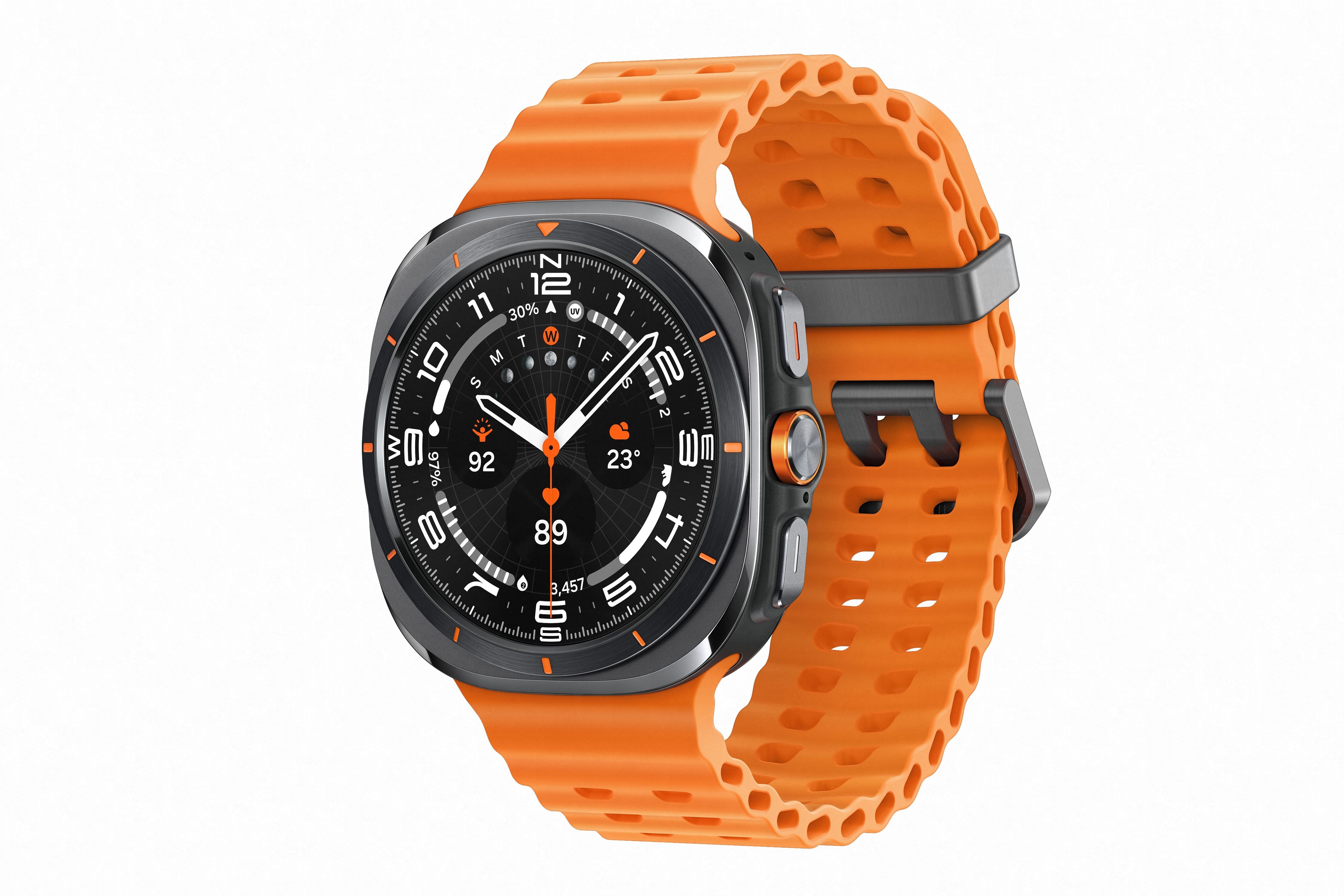
Samsung Galaxy Watch Ultra
$650 $730 Save $80
The Samsung Galaxy Watch Ultra is designed for serious athletes, boasting 10 ATM water resistance and a long-lasting battery that endures for days.
-
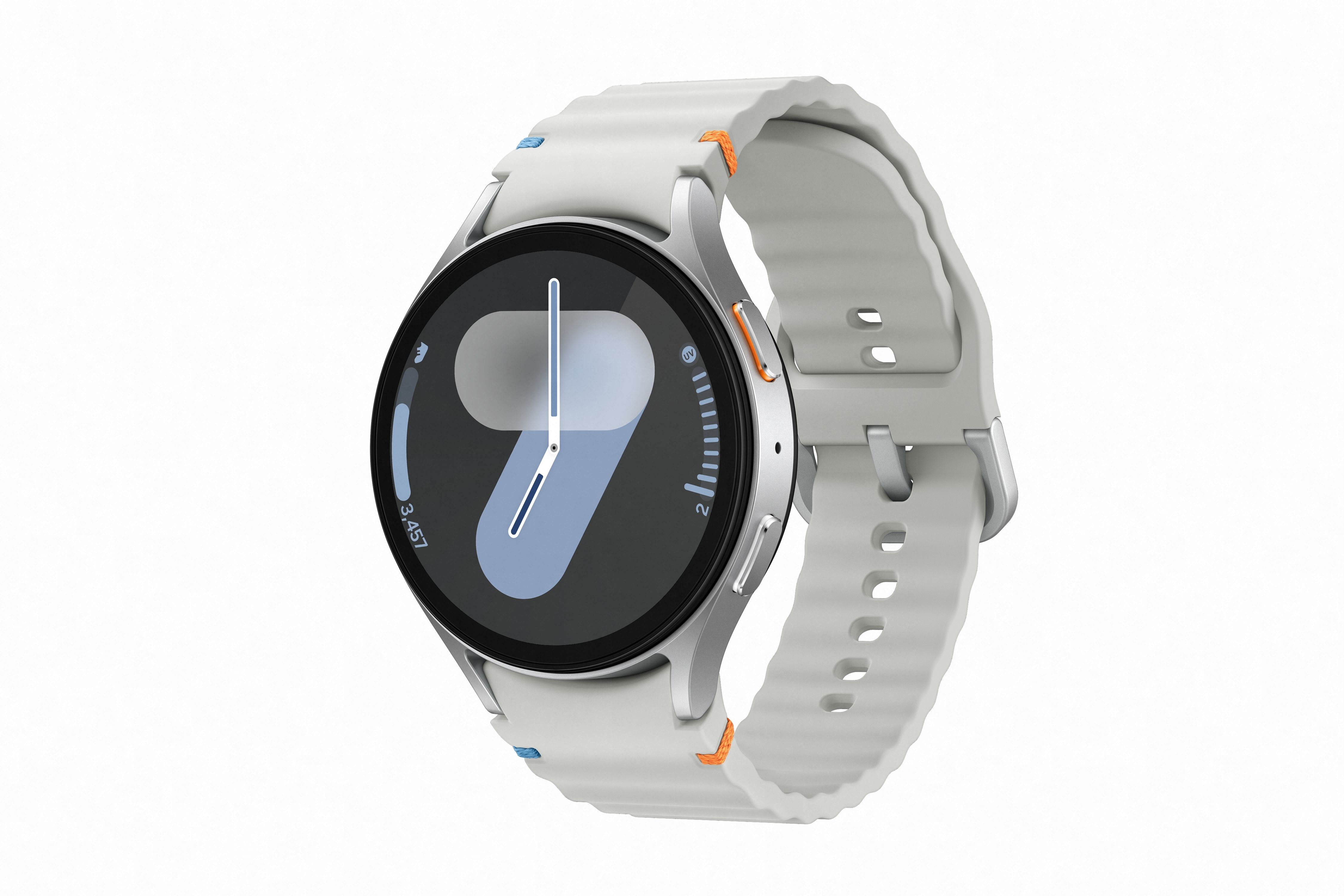
Samsung Galaxy Watch 7
The Samsung Galaxy Watch 7 is Samsung’s entry-level smartwatch for 2024. It resembles the Galaxy Watch 6 but features an enhanced Exynos W1000 chipset, promising significantly improved battery life and performance.


